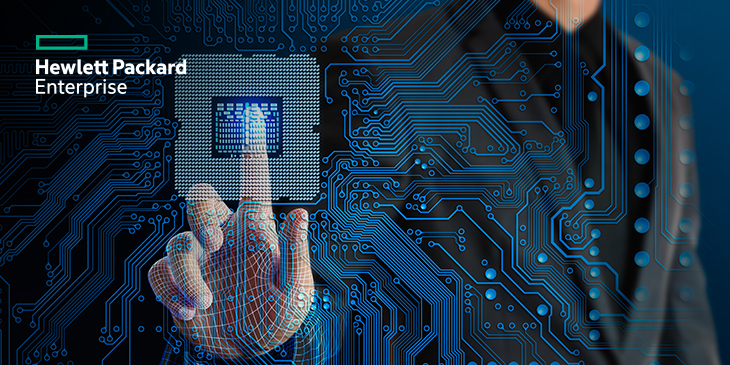
HPE’s Enhanced ML/AI Development and Deployment Solutions
HPE’s Enhanced ML/AI Development and Deployment Solutions
HPE’s enhanced machine learning and AI development and deployment solutions.
Digital transformation is now critical to business growth, and AI-powered solutions play an increasingly important role in guiding customers through their digital experiences.
Swarm Learning is a breakthrough AI solution which accelerates insights at the edge, from diagnosing diseases to detecting credit card fraud. Swarm Learning shares and unifies AI model learnings without compromising data privacy.
HPE is continuously reinventing and improving how we live and work. A worldwide edge-to-cloud business that provides distinctive, open, and intelligent technology solutions, HPE has strong expertise throughout the entire IT ecosystem.
We discussed previously HPE’s recent acquisitions of industry-leading, data-centric AI/ML solutions for businesses. The HPE Machine Learning Development System (MLDS) builds on HPE’s strategic investments in Determined AI. They have combined their robust machine learning (ML) platform, the HPE Machine Learning Development Environment (MLDE), with their world-leading AI and high-performance computing (HPC) offerings.
With the new HPE MLDS, users can speed up the typical time-to-value to realise results from building and training machine models, from weeks and months to days.
HPE Machine Learning Development Environment (MLDE)
The HPE MLDE is a purpose-built, powerful, and user-friendly solution. It offers a pre-configured, tested and fully deployed AI solution for model development and training at scale, with little code rewrites or infrastructure modifications required. The solution is a completely performant, out-of-the-box system that can be used by anybody, not just enterprises that have enormous reservoirs of IT infrastructure, resources, and AI experience.
Businesses face various hurdles when it comes to using AI at scale. Deep learning model training is a complex process, and ML experts currently spend their efforts on AI infrastructure management rather than designing new models or performing training. ML developers and IT experts should look to maintain specialised infrastructure, such as GPUs, to offer sophisticated AI and ML workloads. The HPE MLDS is a complete solution for developing and training ML models that comes pre-configured, fully installed, and ready to use. Consequently, IT complexity is reduced, and engineers’ time can be used more efficiently.
With the assistance of the HPE MLDS, businesses have the opportunity to devote more time and resources to the process of developing new models and training. This is made feasible by the platform’s ability to carry out deep learning training operations across GPUs without requiring modifications to the underlying code or infrastructure. The platform allows for the tracking of experiments, which improves collaboration among ML engineers. It assists engineers in monitoring infrastructure and resource use. The automated optimisation of hyperparameters discovers and trains more accurate models in a shorter amount of time, provides flexibility and a foundation for heterogeneity.
The HPE MLDS is a comprehensive solution that includes a platform for the training and development of models, high-performance computing, networking, accelerators, and other components, as well as services for installation and maintenance. With this solution, companies are able to leverage AI for mission-critical applications.
HPE Swarm Learning – a solution built for the edge and distributed sites
Most AI model training occurs at a central location and relies on merged datasets. This strategy, however, is inefficient and costly, as large volumes of data must be moved back to the source. Data privacy, regulations, and ownership rules can also limit data exchange and movement, leading to erroneous and biased models.
To this objective, HPE introduced HPE Swarm Learning; the industry’s first privacy-preserving, decentralised machine learning framework for the edge or distributed sites.
HPE is contributing significantly to the swarm learning movement by delivering an enterprise-class solution that lets businesses cooperate, create, and accelerate the power of AI models, while maintaining ethics, data protection, and governance requirements.
Businesses can make faster decisions at the point of impact by training models and exploiting insights at the edge, resulting in improved experiences and outcomes.
HPE Swarm Learning employs blockchain technology to ensure that only learnings acquired at the edge are shared, rather than the data itself. The blockchain network enables edge locations to share insights in a trusted manner. If a bad actor attempts to penetrate the swarm, the smart contract detects the imitator, defends the swarm, and can block unauthorised entry.
Scientists, researchers, and AI engineers can now train on a greater amount of data while still adhering to all privacy standards. This results in more accurate estimates, reduced prejudice, and faster answers. It also saves on IT infrastructure costs by eliminating unnecessary data movement and duplication.
HPE Swarm Learning can assist a range of organisations in collaborating and improving their insights:
- Hospitals
- Banking and financial services
- Manufacturing sites
The partnership between HPE and Qualcomm to deliver Edgeline Converged Edge systems.
HPE is building on its collaboration with Qualcomm Technologies, Inc. to deliver advanced inferencing offerings to support heterogeneous system architectures that provide AI inferencing at scale.
HPE Edgeline EL8000 Converged Edge systems are compact, ruggedised edge computing solutions, which are optimised for harsh environments outside the datacentre. The Qualcomm® Cloud AI 100 accelerator delivers inferencing for data centres and at the edge. The combined solution delivers high performance at low power for demanding AI Inference workloads.
HPE Edgeline Converged Edge Systems put enterprise-class computing, storage, networking, security, and systems management at the edge. HPE Edgeline is designed for the challenging operating environments found at the edge, built on the same technology as datacentre systems.
The Qualcomm Cloud AI 100 is designed for AI inference acceleration at the edge. The solution addresses unique requirements in the cloud, including power efficiency, scale, process node advancements, and signal processing — facilitating the ability of data centres to run inference at the edge faster and more efficiently. Qualcomm Cloud AI 100 is a leading solution for data centres that increasingly rely on infrastructure at the edge.
Conclusion
With a purpose-built adaptable architecture, the HPE MLDS accelerates innovation while lowering IT complexity. The HPE MLDS eliminates the frustrations and expenses associated with ML model development and training by using a complete platform and a broad set of components. As your IT partner, we can help your business navigate these and many other emerging technologies.









